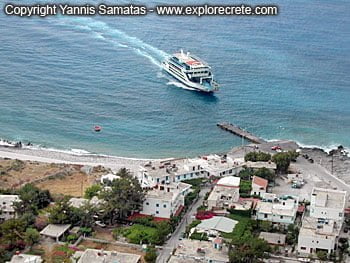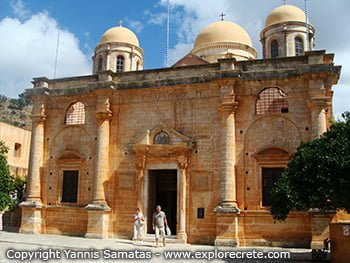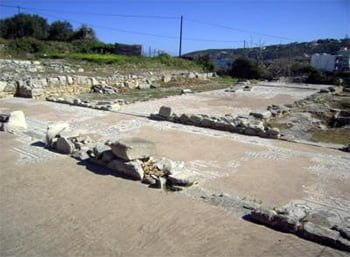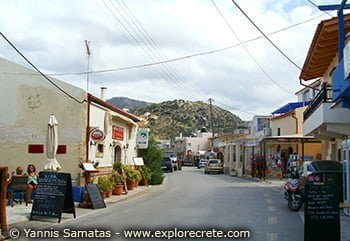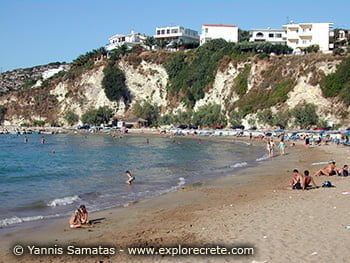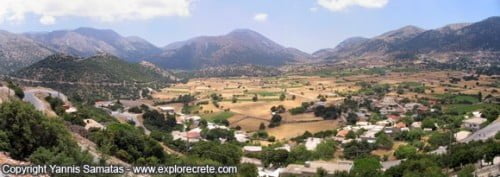Kalyves history | Amphimatrion | Kasteli Kalyvon
History of Kalyves
The name Kalyves
It is said that Kalyves took its name from the huts (kalyves in Greek) built by Arab pirates when they invaded in 828 AD and conquered the Sarakinos (“Saracen”) area near the village.
Another version has it that the name comes from the huts built by farmers near their fields, for them to stay in during the summer without needing to return to their village each night.
Kalyves in ancient times
In ancient times, according to the historian Strabo, on the site of Kalyves stood the city of Amphimatrion.
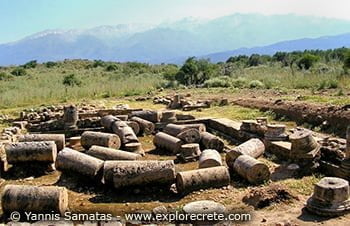
It is also thought that near Kalyves was the city of Kissamos, one of the two harbours of the ancient city of Aptera (Kasteli in Chania is also called Kissamos, but this is a different town, many kilometres from Kalyves).
Aptera (photo ->) ruled the whole Apokoronas area, and its ruins are preserved at the impressive archaeological site, a few kilometers south of Kalyves.
Kalyves in the Venetian period
In the 15th century, the Apokoronas area formed one of the castellanies of Chania Prefecture. Its seat was Kasteli Kalyvon (Castel Apicorno), which stood on the site of the modern-day Kalyves.
The fortress of Castel Apicorno, whose ruins are preserved east of Kalyves, was built by the Venetians in 1206 to face possible enemy raids. If the castle was attacked the Venetian colonists took refuge inside, while the local population was usually left to its fate.
Castel Apicorno, whose name is derived from that of the surrounding area of Apokoronas, was captured in 1538 by the pirate Barbarossa, who destroyed it.
Kalyves during the Turkish occupation
Kalyves, like the rest of Crete, suffered during the long period of Turkish rule. This was one of the places where the Cretan revolutionaries of 1821 were tortured before being put to death.
Kalyves and the whole of Apokoronas played an important part during the Greek Revolution of 1821 and later, in the Cretan Rising of 1866.
The goods produced in the fertile plain helped to maintain the rebel groups.
Kalyves today
In 1913 Crete was unified with Greece, having been liberated from the Turkish yoke a few years earlier.
Kalyves began to develop, and electricity was brought to the village in 1928, six months earlier than Chania and many years before other Cretan villages were able to enjoy the same benefits.
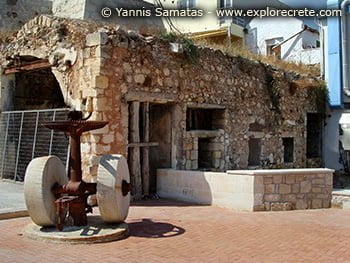
The electricity generators were installed in the old watermill you can see in the village square.
Like many other coastal parts of Crete, Kalyves has known rapid tourist development in recent years. Tourist development is mild, with small hotel units.
From 2000 onwards there has been a construction boom in Kalyves and the other villages of Apokoronas, with summer houses and permanent homes for Northern Europeans who have chosen this area for its special natural beauty, good climate and convenient location near Chania.
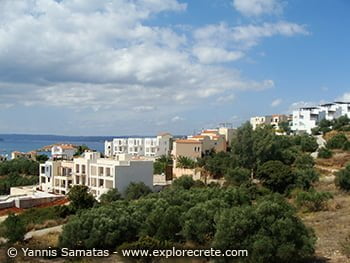
Land and property purchase has flourished so much here that, from 2000 to 2009, Real Estate and Property signs sprang up like mushrooms.
The hundreds of villas built in Kalyves up to 2009 have covered all the hills near the sea, and today Kalyves has spread out so much that it has almost been amalgamated with neighbouring Almyrida.
- Read more about Kalyves
© explorecrete.com All Rights Reserved. Reproduction or copying without permission is prohibited.

